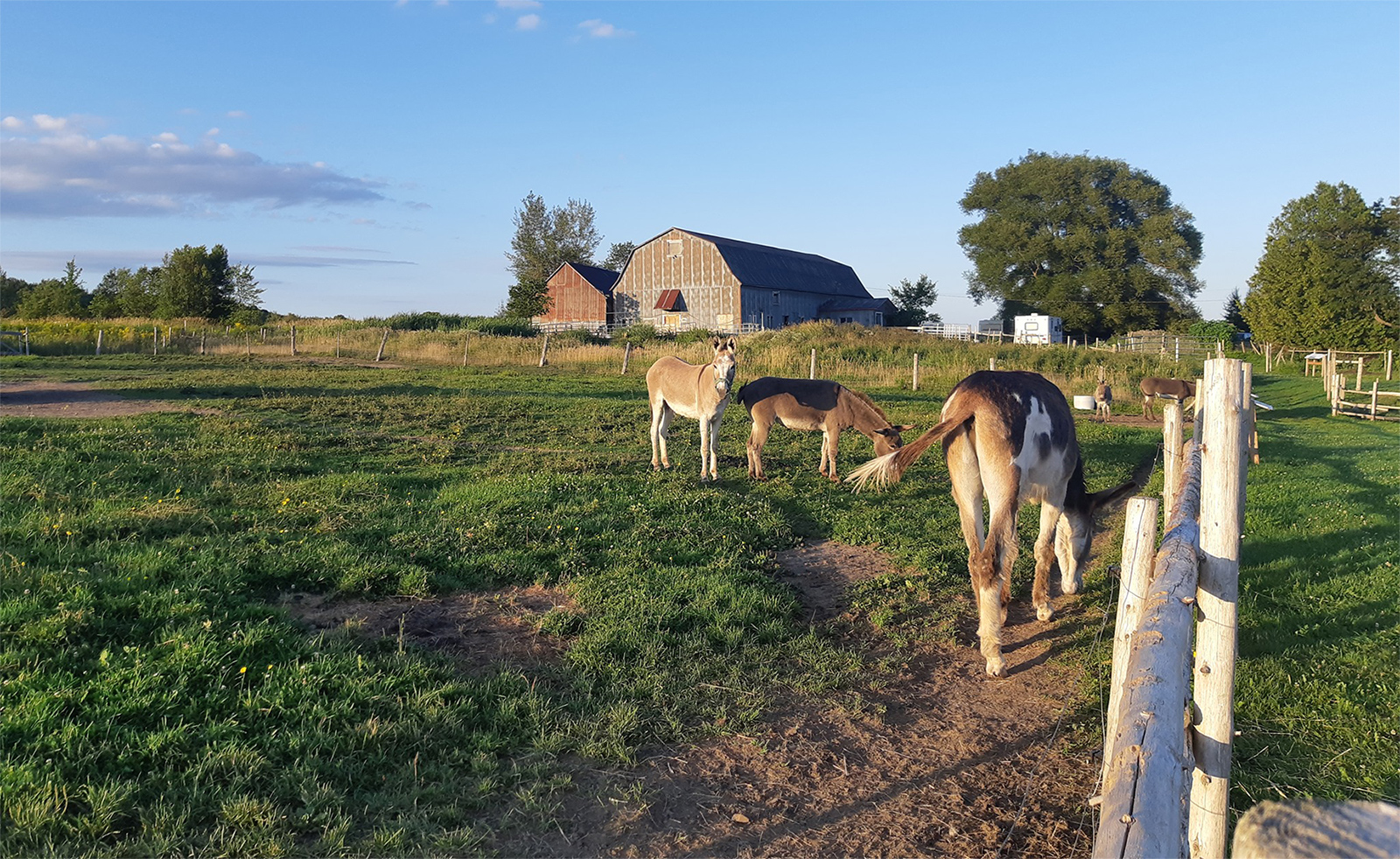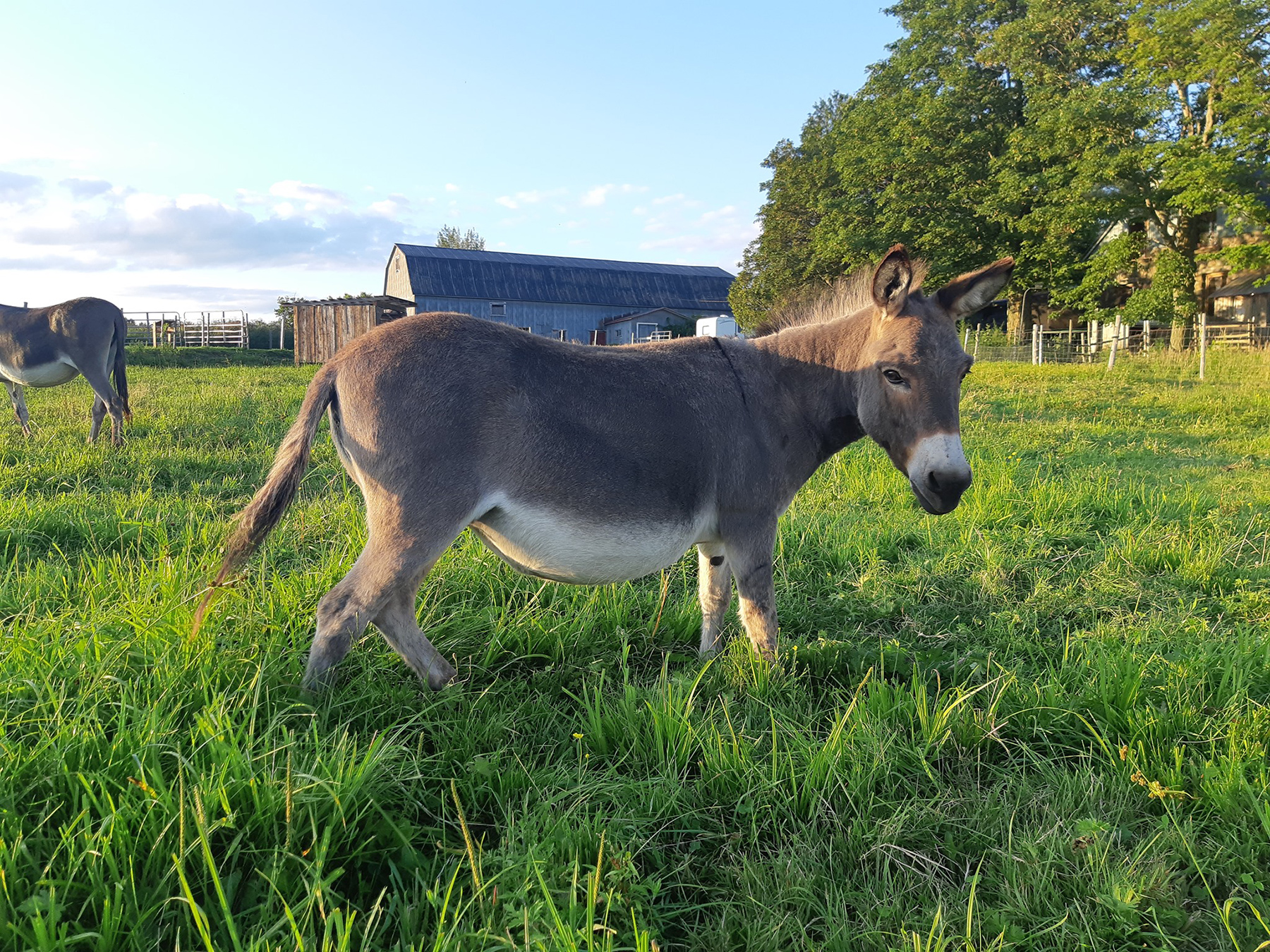-
Visit our donkey farm!
-
Soaps, creams and other cosmetics from natural ingredients
-
Welcome to the website of our family-run donkey farm
-
What is donkey milk?

The properties of donkey milk
Donkey milk across history
In recent years, donkey milk has attracted a great deal of interest for its many diverse applications. In fact, however, donkey milk has been used for various purposes for thousands of years. In ancient times, it was used to cure all manner of ailments, and in the 19th and 20th centuries, it was regarded as a “fountain of youth” for people’s skin and a substitute milk for orphaned babies, who drank it directly from the udder.
Cleopatra, Queen of Egypt, preserved her renowned beauty and youthful skin by bathing in donkey milk. She owned a herd of some 700 donkeys.
The Romans used donkey milk for its therapeutic virtues. Poppaea, the wife of Emperor Nero, used it to keep her skin radiant and supple. The Roman Empress Messaline, wife of the emperor Claudius Ist (10 BC to 54 AD) made beauty masks from slices of bread soaked in donkey milk.
Exhausted by wars and many excesses, Francis Ist, King of France, followed the advice of a doctor from Constantinople by adopting a donkey milk treatment that reportedly worked miracles. In his words: “One day from a donkey, milk restored my health, and I owe to this circumstance, more to donkeys than to faculty.”
Napoleon’s sister, Pauline, was known to take donkey-milk baths—causing a scandal at a time when milk was very scarce to come by.
In the 19th century, donkeys were regularly seen in big-city streets, led by merchants who announced their passage by crying out: “Donkey milk, good donkey milk!” The upper classes consumed this precious beverage regularly, while poor families bought it only for sick children or for their elderly and infirm. Over time, donkey milk also came to be used in maternity hospitals. Donkeys willingly nurse infants put in direct contact with the udder.
Up to the beginning of the 21st century, donkey milk was commercialized as nourishment for orphaned babies and to treat stunted children, the sick and the elderly. For these reasons, donkey farms sprang up in France, Italy, Switzerland and Germany, among others. The success of these special farms is a testament to the product’s ancestral reputation and the virtues of its vital properties.
What we know about donkey milk today
Dietary properties
Science has shown that, well before infant formula, donkey milk was actually the closest milk to human milk, and the best-tolerated. Much research has been conducted in recent years on the nutritional properties of donkey milk, and the findings are unanimous.
Donkey milk is considered to be the best replacement milk for babies who are unable to breastfeed. It is also an alternative for people allergic to the bovine proteins found in cow milk. Donkey milk is very easy to digest as it is low in fat and its proteins are non-coagulable and themselves easy to assimilate. The properties of donkey milk have also been studied in the treatment of atherosclerosis.
The main obstacle to its use as a food is currently the high cost of production.
In cosmetics
The cosmetics applications of donkey milk conversely require relatively low quantities of milk to deliver significant added value. Much information on this topic can be found on commercial websites, most often based on the stories of Cleopatra, Poppaea and other quasi-legendary women who reportedly preserved their youthful skin by bathing in donkey milk. However, scientific research has also been conducted in this area, and has demonstrated the properties of donkey milk.
In one recent study on cosmetics containing donkey milk in Italy (2013), Cosentino listed the proven properties of donkey milk in cosmetics:
Moisturizing and rebalancing properties for the skin-cell membrane; these properties can be traced back to the high levels of lysozyme in donkey milk, and the antioxidant power of its fatty acids, according to multiple authors.
Prevention of skin aging, and smoothing of age-related wrinkles, Orsingher 2011.
Regeneration of the intercellular substance of the dermis, because it stimulates collagen synthesis, Orsingher 2011.





